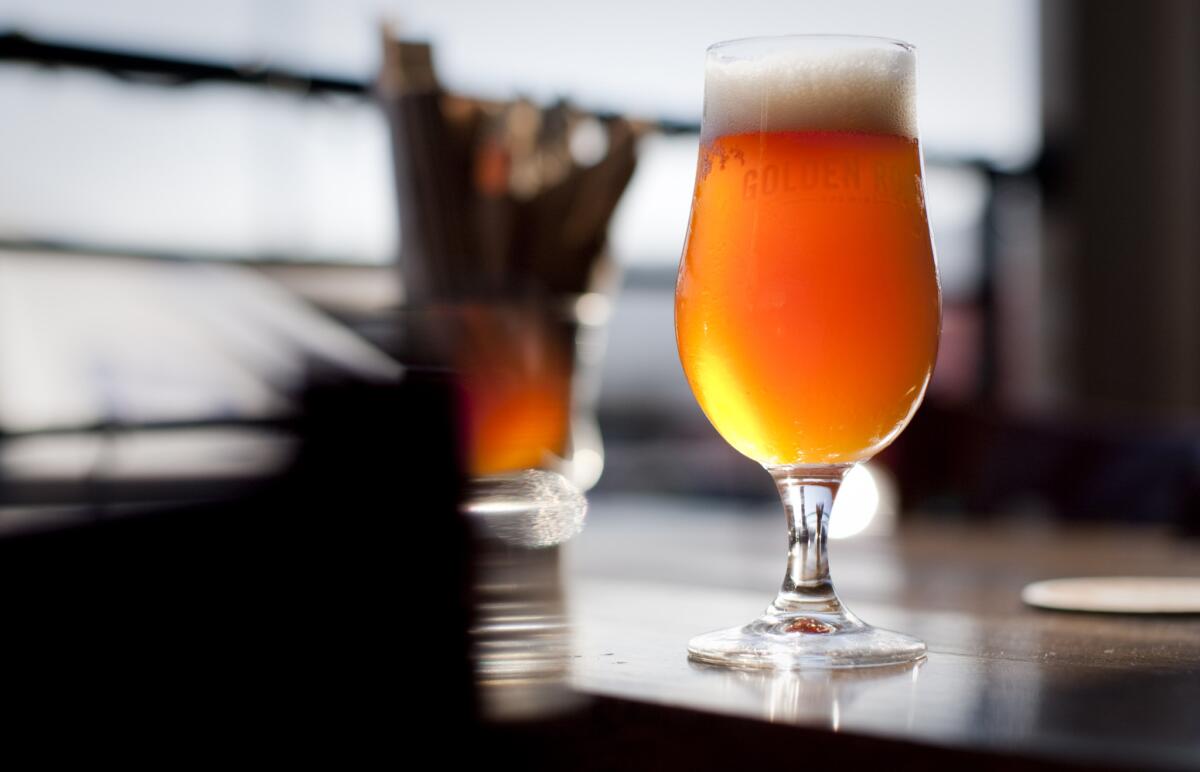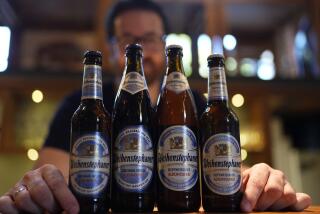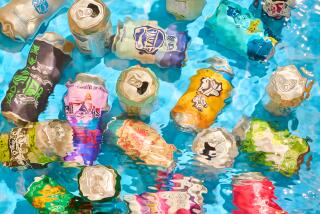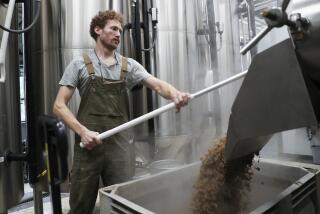6 craft beer terms every beer geek should know

Even if you haven’t yet fallen into the craft beer rabbit hole — a warren of minutia and terminology that can make even a brewer’s head spin — it’s helpful to get a grasp on some of the more common terms that beer writers and beer geeks use to discuss the beverage that enthralls them.
Here’s a selection of six terms that we’ve seen tossed around in beer reviews and at events without much explanation. Though there won’t be a test on the vocab, we’d recommend studying up anyway; it’s a great excuse to sit down with a pint or two.
Wort - It all starts with wort (pronounced, depending on who you ask, like “wert”). Wort is the sweet liquid that brewers create by steeping malted barley in hot water and boiling the resulting liquid with hops. It becomes beer once the yeast is added and fermentation takes place.
Example beer: Everything that’s called beer starts off as wort, so this is an easy one: whatever’s in your glass!
Specific Gravity - The measure of density of a liquid, specific gravity uses all manner of esoteric units (BRIX, degrees Plato, degrees Balling) to communicate how much sugar is dissolved in the unfermented wort (called “original gravity”) or finished beer (“final,” or “terminal gravity”).
A brew with a higher original gravity — fittingly known as a “high gravity beer” —ends up with a high alcohol content. The yeast had more dissolved sugars to eat, which resulted in the production of more alcohol. The converse is also true, and “low gravity beers” often also get called “session beers.” A brew with a very dry finish (also called “well attenuated”) will usually also have a low final gravity — less dissolved sugar in the final beer means a less sweet flavor.
Example beer: Try a typical West Coast-style IPA (like the example from AleSmith). These beers begin with a moderately high starting gravity that’s well attenuated resulting in a moderate 7%-ABV and a dry finish. The “East coast IPAs” (think 60 Minute by Dogfish Head) typically are not as well attenuated and feature a sweeter finish.
Session Beer - Typically a low-alcohol beer that’s flavorful enough to hold your interest for several pints during a drinking session. Originally referring to the British pub styles like milds and bitter, session beers have come to mean anything under about 5% alcohol, and earlier this year the Session IPA (a full-flavored but low-booze version of the India Pale Ale) became a popular example of this trend towards lighter brews.
Example beer: Any of the many Session IPAs now available like Stone’s Go To IPA or Stateside from Three Weavers Brewing. Nearly the entire lineup of brews from MacLeod’s Ale Company in Van Nuys are session beers as well.
Bottle Conditioned - Some beer styles — typically Belgian beers, but also many craft-brewed beers and home-brewed examples — are naturally carbonated in the bottle (as opposed to force-carbonated with CO2 in a brewery’s brite tank). This bottle conditioning requires adding a bit more sugar (and sometimes a dose of fresh yeast) to the nearly-finished beer just before it’s packaged. This extra fuel kicks off a mini fermentation which results in a touch more alcohol and enough CO2 to carbonate the beer in the bottle. The rejuvenated yeast also help “clean up” any rogue flavor compounds or excess oxygen left from the brewing process. Bottle conditioned beers usually get parked in a special “warm room” at the brewery that helps this secondary fermentation along.
The results of the bottle conditioning are often a very lively natural carbonation as well as a thin layer of sludge at the bottom of the bottle. This collection of dormant yeast cells, called “lees,” are harmless and can be consumed without worry, though it can muddy the flavor of a delicate beer and many drinkers prefer to pour a bottle conditioned brew with care to leaving the lees in the bottle.
Example Beer: Belgian abbey ales (a dubbel or tripel) like the examples from St. Bernardus or Chimay.
Noble Hops - While there are dozens upon dozens of hop varieties being grown today, only a tiny fraction can rightfully be called “noble hops.” While there is some dispute over which varieties earn the elevation to “noble” status, traditionally the ranks have included four continental European varieties grouped together because of similar floral, earthy flavors and lower levels of bittering acids. Tettnang, Hallertauer Mittelfrueh, and Spalter from Germany and the sublimely zesty Saaz hops from the Czech Republic are the core noble hop varieties, and their terroir and place in the continental brewing tradition is an important, if unofficial appellation.
Example beer: Look to European lagers — especially the golden pilsners — for examples of the flavors that earned these hops their special place.
Bugs - As sour beers and wild ales become more popular and more common in bars, restaurants, and home fridges, so to does the discussion of what exactly makes these beers so funky and puckering. The answer is a myriad of bacteria and wild yeasts collectively called “bugs” by brewers, cellarmen and beer geeks alike. There’s the wild yeast, and winemaker’s worst enemy, Brettanomyces (“Brett”) that brewers prize for the complex flavors it can lend to a brew — from bright tropical fruit scents to musty, sweaty aromas lovingly described as “barnyard” or “horse blanket.”
Lactobacillus and pediococcus are two of the common types of bacteria used in beer, in addition to their use in yogurt, sauerkraut, and other fermented foods. These bacteria can consume sugar molecules that brewer’s yeast doesn’t usually like. They create lactic acid as a byproduct and are largely responsible for the sour in sour beer.
Example beer: To experience brett character try the sublime Orval from Belgium — a Trappist pale ale that’s bottle conditioned with a strain of Brettanomyces that slowly alters the beer’s flavor over months or years.
More to Read
Eat your way across L.A.
Get our weekly Tasting Notes newsletter for reviews, news and more.
You may occasionally receive promotional content from the Los Angeles Times.









